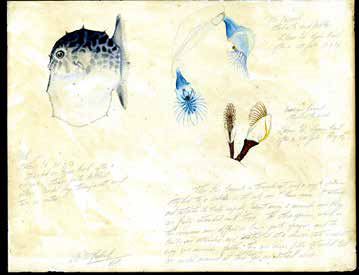
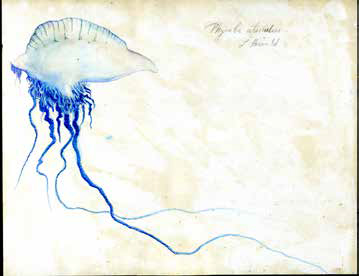
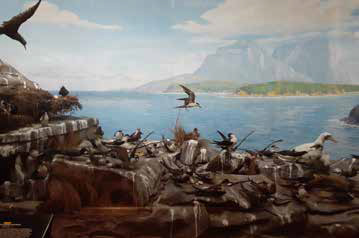
30 August 2025 marked the centenary of the death of naturalist Alan McCulloch
To commemorate the death of Alan McCulloch, the Lord Howe Island Historical Society and Museum placed a wreath on the McCulloch monument at Signal Point, Lord Howe Island. As well as being a prolific science writer, McCulloch also wrote many popular articles about Lord Howe Island. The LHI Museum holds a number of his watercolour drawings of marine life, and also the portable typewriter he used whilst on the Island. Author of McCulloch’s biography, Brendan Atkins, provided this story on Alan McCulloch
Remembering McCulloch
Brendan Atkins, The Lord Howe Island Signal . Image credits below.
Caution: this story discusses suicide
“On a knoll commanding a wide view of peaceful mountain, reef and sea, there stands a monolith, erected to the memory of Allan McCulloch, naturalist, an outstanding figure in the history of the island”, says cinematographer Frank Hurley in Jewel of the Pacific, his 1932 travelogue about Lord Howe Island.
McCulloch died on 30th August 1925 from a self-inflicted gunshot wound in Honolulu. Officials cremated his remains and returned them to the Australian Museum in Sydney, McCulloch’s workplace for 27 years. Ellis Troughton, McCulloch’s museum colleague and great friend, arrived on Lord Howe with the ashes on Christmas Day 1925.
“In those earlier times, some church denominations would not have granted him burial rights owing to his death by suicide”, says Island historian Chris Murray. “However, I am proud to say that the Island people welcomed his ashes ‘home’ to Lord Howe, a place he loved.”
Reverend Clarke Kennedy officiated at a simple ceremony at Signal Point on 13th January 1926. “Quite a number of people gathered there and paid their last respects”, wrote visitor Ellen Ward. “He had many friends. It was a very impressive service.”
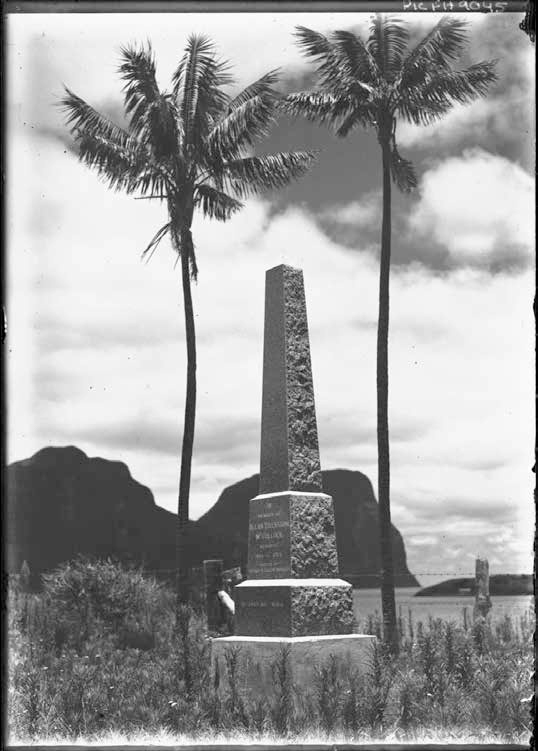
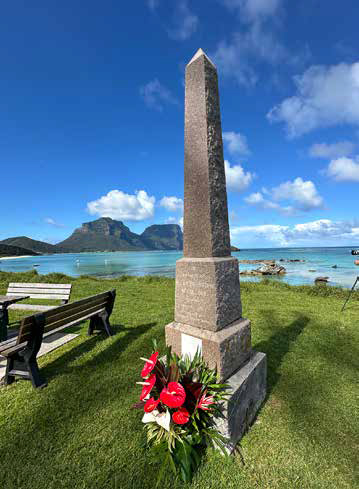
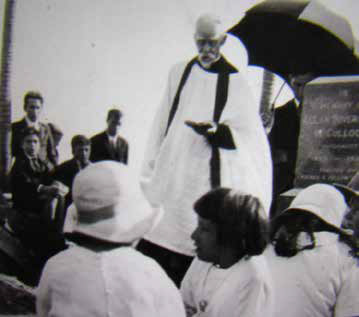
McCulloch was a “charming companion”, liked by just about everyone who knew him. In particular, Frank Hurley and McCulloch enjoyed a creative friendship forged during a six-month expedition to Papua in August 1922.
But McCulloch picked up malaria and dysentery, diseases that plagued his remaining years and deepened his depression. Controversially, he and Hurley stole cultural artefacts from villages – objects still held by the Australian Museum.
As a naturalist, McCulloch published more than one hundred scientific papers, reports and articles illustrated with his own drawings and photographs.
His final scientific legacy is a checklist of fishes recorded from Australia, published posthumously. “McCulloch’s work was meticulous . . . The state of Australian ichthyology [fish biology] improved enormously in his hands from 1907 to 1925”, writes science historian Brian Saunders.
McCulloch and Lord Howe
McCulloch worked tirelessly to promote Lord Howe Island’s natural beauty and biodiversity, and to raise awareness of the ecological impact of the introduced Black Rat.
In 1921, he led an expedition to the island to collect specimens and capture scenery for a series of three dioramas. Only one of these survives at the Australian Museum: the Admiralty Islets diorama, a stunning example of McCulloch’s science communication and artistic vision.
McCulloch also began making natural history films for his public lectures using a cinecamera borrowed from Hurley. In 1924, he filmed fishes from the island’s lagoon in a large aquarium, with the “ever-willing help of Mr. R. Baxter of Lord Howe Island and his boys”, using techniques he and Hurley developed in Papua.

Another of McCulloch’s films depicted “seabirds and their haunts, showing some of the risks the Museum zoologists take climbing over cliff faces in search of birds and their habitats”.
A dramatic photograph from this time shows McCulloch filming the birds from precarious Malabar cliff, 250 metres above the rocks and ocean below. More than any other, for me this photograph captures McCulloch’s adventurous and creative spirit.
Signal Point provides the perfect setting for McCulloch’s memorial, writes Ellis Troughton. “Standing facing the reef with the waves thundering on the coral barrier, one realised how appropriate was this setting for the resting place of a man who was in every sense a nature lover, the restless surf seeming to typify the unceasing mental energy which ultimately consumed him.”
Further reading
Brendan Atkins, 2022, The Naturalist, the remarkable life of Allan Riverstone McCulloch, published by NewSouth Publishing, in association with the Lord Howe Island Historical Society & Museum.
Image credits
Allan McCulloch with cinecamera on Malabar, Lord Howe Island, Christmas 1923. Photo by Anthony Musgrave, courtesy Australian Museum Archives V10661.
Reverend Clarke Kennedy conducting the memorial service for Allan McCulloch, 13 January 1926. Courtesy LHIHS.
Memorial to Allan McCulloch, photo by Frank Hurley, 1932, courtesy National Library of Australia.
Admiralty Islets diorama at the Australian Museum, photo by Brendan Atkins.
This article appeared in The Lord Howe Island Signal, 31 October 2025.

